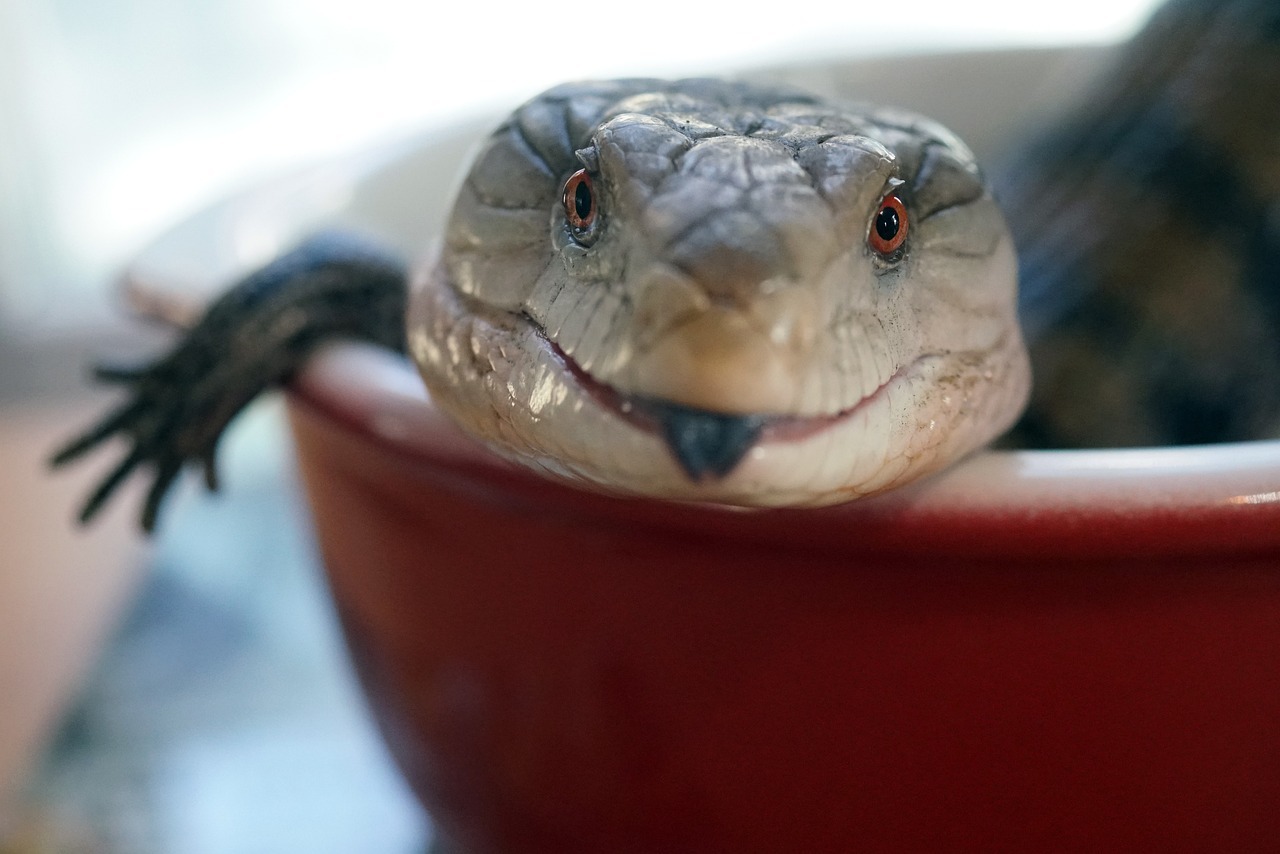The Blue-tongued Skink, also referred to as the Blue-tongued Lizard, Blue-tongue, and Bluey, is a lizard species categorized under the Tiliqua genus, which contains the largest skink species. As its name suggests, it possesses a large, blue tongue that can be bared as a startle display to predators and enemies. Blue-tongued Skinks are among the best lizard pets you can have at home because they are docile and easily tamed, making them excellent beginner reptile pets. If you want to find out more about the Blue-tongued Skink, make sure to read further!
History
Blue-tongued Skinks are diurnal species, foraging on the ground during the day’s hottest hours and resting during the night. It has eight recognized species, including the following:
- Adelaide Pygmy Blue-tongued Skink
- Indonesian Blue-tongued Skink
- Centralian Blue-tongued Skink
- Blotched Blue-tongued Skink
- Western Blue-tongued Skink
- Shingleback
- Common Blue-tongued Skink
- Irian Jaya Blue-tongued Skink
They are native in various parts of the world, but most individuals in the pet trade come from Australia and New Guinea. In the said areas, Blue-tongued Skinks are very common and often sighted in people’s yards. Since they live among humans, these lizards should be wary of dogs, cats, as well as their natural predators like kookaburras and snakes.
Characteristics of a Blue-tongued Skink
Average length: 18 to 24 inches
Average life span: 15 to 20 years in captivity
Average weight: 1 kilogram
This large reptile has short legs and a stout body. It is ovoviviparous, meaning the eggs hatch inside the female’s body, giving birth to 5 to 25 young per litter. In the wild, Blue-tongued Skinks live up to more than 30 years. They live among the urban and suburban areas in Australia, wherein they are considered beneficial because they eat garden pests like snails and slugs.
There are three common color-morphs of this species. In warm environments, several species have more reflective skin than others. Their body color shows stripes of black or dark brown and light brown from its nape to its tail base.
Although generally docile, when these reptiles are threatened, they hiss and reveal their bright blue tongues as a bluff-warning and might even deliver a bad bite to the predator or enemy.
Caring for a Blue-tongue Skink
Captive-bred Blue-tongue Skinks are quite friendly and much easier to raise than the wild-caught ones. They are more tolerant of lower temperatures and have minimal UVB requirements. Likewise, they can tolerate handling and can become “lap lizards” with regular, careful handling. Wild-caught species may be selective in their diet and may have a bad temperament, maintaining a defensive attitude for years, and may be violent towards humans. Therefore, it’s best to buy a captive-bred from professional reptile hobbyists.
A minimum-sized enclosure is 36 to 26 inches long, 24 inches deep, and 18 to 24 inches high. It should be well-ventilated and spacious. Keep in mind that Blue-tongue Skinks are not tolerant of other skinks, except during the breeding season, so you should only keep one pet in a single enclosure. In some cases, a female and male pair can be housed in a single enclosure, but make sure to monitor them closely. If they fight, keep them in separate enclosures.
When choosing a substrate, choose one that helps to maintain humidity of the enclosure. Ideal substrates include cypress mulch, cage carpet, and aspen shavings. As ground-dwelling reptiles, they will need a large space to crawl. Also, they will need rocks and thick branches to climb on occasionally. A water bowl filled with clean water should be available inside the enclosure. It should be large enough for the Blue-tongue Skink to soak its whole body.
When it comes to lighting, your pet would require UVB lighting to maintain optimum health. A basking spot that around 85 to 95 degrees Fahrenheit is also needed. Heating works well when you combine a basking lamp with an under-tank heat element.
As omnivores, a Blue-tongue Skink’s diet consists of 20% vegetables, 40% protein-rich insects, and 10% fruits. You can feed your pet with a variety of fruit sources, such as leafy greens, legumes, and other vegetables. Feed them protein-rich animals and insects, as well as a small amount of fruit to spice up their diet. Juveniles should be fed daily. Meanwhile, adults can do well on one or two feedings per week.

